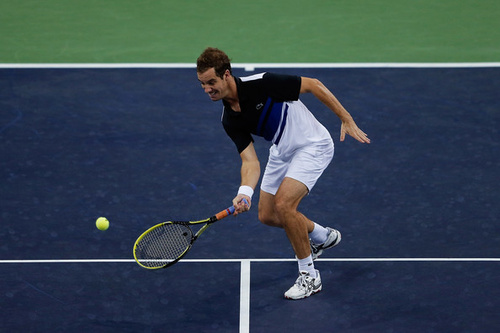Don't miss any stories → Follow Tennis View
FollowFalling Back: A Long View of a Long Season
Poor performances by a number of players in the top 10 have underlined this year’s Asian swing in both the ATP and WTA. Most recently, world No. 10 Richard Gasquet fell in the first round to the 43rd-ranked Canadian Vasek Pospisil at the Shanghai Masters 1000 tournament. Despite Pospisil’s obvious talent, Gasquet’s loss marks yet another notable stumble from a top-10 player.

A week before, then-world No. 8 Jo-Wilfried Tsonga exited to Ivan Dodig in the second round of Tokyo, and a back injury forced then-world No. 5 Tomas Berdych to retire in Beijing. Another top-10 man, Stanislas Wawrinka, suffered a stunning early loss to Sam Querrey at the latter event just weeks after his US Open semifinal run. Two weeks ago, moreover, the fourth-ranked David Ferrer fell to Portuguese journeyman Joao Sousa in Kuala Lumpur. On the women’s side, for example, world No. 2 Victoria Azarenka has struggled mightily this fall. The third-ranked players on both Tours, Andy Murray and Maria Sharapova, have missed the entire fall season with injuries. This rash of pedestrian performances and injury absences are showing that body management and player scheduling may matter as much during this phase of the season as raw tennis ability.
By contrast, world No. 7 Roger Federer has placed great weight on attempting to schedule his year carefully to avoid burnout. This week’s Shanghai Masters 1000 tournament will be Federer’s first live action since his fourth-round defeat at the US Open. While he has suffered in ranking points from his absence, his conservative scheduling will allow him to remain longer on the ATP Tour. Many have criticized Roger’s lack of tournaments this year and suggest that his poor performances reflect his lack of tennis. This view may be justified, but Gasquet’s and Azarenka’s capitulations in the past week may add merit to Federer’s scheduling.
The reality is that the 10-month tennis season is a grueling one, and a player cannot expect to maintain the best possible tennis that he or she can produce without close management of their bodies and their playing schedule. Perhaps younger players on the tour should take note of Federer’s scheduling, for some of these poor performances do not come without a cost. For example, Gasquet’s loss on Thursday could cost him a berth at the World Tour Finals (ATP year-end championships) in London.
Moreover, some of the slumping players have declined sharply after recording a series of outstanding results in 2013. Gasquet recorded his career-best performance at the US Open this year in reaching his second major semifinal and first since 2007. In the WTA, Azarenka reached the US Open final and has historically finished the year strongly, including a 2011 finals appearance at the year-end championships. But her injuries and her most recent performances indicate that she may struggle at that marquee event in Istanbul this year.
So that begs the question. Are some players in the top 10 playing too many tournaments, or are some of them simply not conditioned enough for the long season? Whatever the answer is, it is likely that the player who can strike a balance between their practice and training regimes and their tournament scheduling may be able to forestall issues such as injury and burnout to ensure their longevity in the top tier of tennis.










